Your Specialists in Drain Excavation
Drainage excavation is only performed when absolutely necessary, but the expert plumbers at Mr Emergency are fully equipped with the skills, expertise, and advanced tools to deliver lasting solutions for clogged drains.
Using state-of-the-art technology, we thoroughly inspect your drains to determine the best course of action, reserving excavation for the most severe situations.
With 24/7 availability year-round, including weekends and public holidays, we’re always ready to help. Plus, you’ll never pay extra for after-hours service − our rates stay consistent no matter when you call.
Why Resort to Drain Excavation?
When faced with a blocked drain, the first step taken by a Mr Emergency technician is to perform a detailed CCTV drain camera inspection to identify the exact location and cause of the issue.
If the blockage can be resolved, they will use high-pressure hydro jetting or an electric eel to clear the obstruction effectively. In some cases, pipe relining may be carried out to restore damaged underground pipes and ensure uninterrupted water flow − all without invasive digging.
For severe blockages or extensively damaged pipes, replacement is often the only solution. This is where our experienced team takes charge, excavating trenches to remove compromised sections in the required area and install new, durable pipes.
Equipped with heavy-duty excavators capable of handling up to four tonnes, or mini excavators if the job is smaller, our skilled plumbers are prepared for projects of any size.
Once the excavation is complete, we securely install the new pipes and work to restore your property to its original state, minimising disruption wherever possible. Although excavation can be a significant process, we prioritise efficiency and precision to reduce its impact on your daily life.
The result? A robust, long-lasting drainage system built to perform for years to come. Our team stays up-to-date with the latest drainage plumbing techniques to ensure you receive the highest standard of service.
Telltale Signs You're in Need of Drainage Excavation
Excavation of your drainage system is something we typically lean towards as a last resort measure – sometimes it is the only option. However, there are some identifiable symptoms of severe drain blockage that indicate it may be the best course of action. They include:
Sinkholes Forming in the Yard
If you notice sinkholes forming in your backyard, it could be a sign of sewage leaking from broken pipes. The moisture from the sewage gets trapped in the soil and forms sinkholes, in much the same way as you hear about sinkholes forming in city and suburban streets. If you notice them, it’s time to call Mr Emergency.
Your Yard is Growing Better in Patches
Have you noticed that your lawn is strangely growing significantly better in some areas and less so in others? It could be a sign of sewage leaking from damaged pipes. Though raw sewage boasts strong fertilisation properties, this might be one situation where a lush lawn may be a cause for concern rather than something to enjoy.
Your House Starts Smelling Like a Sewer
If you’re detecting a sewer-like smell coming from your toilet or your drains, yet they appear to be completely clean, it may indicate that your pipes are severely backed up. In this case, they may need urgent attention from a licensed plumber, and a sewer line excavation may be necessary.
Emergency Drainage Excavation
If there is one situation that could be considered an emergency, it’s a blocked drain. Mr Emergency is here to assist with a range of options, including drain excavation if needed.
When it comes to drainage problems, safety considerations are always a top priority. Before actual digging starts, we do the preparation work. We might have to break through concrete and there’s bound to be damaged pipe material that has to be removed.
Whether the drainage issues are caused by tree roots or some other issue, trenching is always a big job but we’ll leave the area neat and tidy when the work is complete.
We operate with 24/7 availability for your convenience. You can get in touch with us any time day or night, even on public holidays, and we’ll be there. For urgent plumbing needs, such as drain excavations, or even just general maintenance requirements, our team will aim to be at your door within 30 minutes* of your call.
Whether you need us on a weekend or late at night, we won’t ever charge you more for after hours or weekend drainage and plumbing excavation services. This even includes public holidays. Mr Emergency is your trusted source for professional drainage excavation services.
Why Choose Mr Emergency?
At Mr Emergency, we aim to simplify the drain excavation process and reduce your stress by using cutting-edge technology and proven methods.
If we recommend excavation, it’s because it’s the most effective and long-term solution for resolving your drainage issues.
When you choose Mr Emergency, you benefit from:
- Fully licensed and qualified plumbers and gas fitters
- Ongoing training for our technicians to stay current with the latest advancements
- Rapid response times, with technicians arriving at your home within 30 minutes* of your call
- A 12-month warranty on all work, materials, and parts supplied and installed by us$20 million in public liability insurance for your peace of mind
- Flexible financing options** for eligible customers
- Advanced dispatch systems to ensure punctual service every time
- No additional fees for after-hours, weekend, or public holiday service
- Transparent, fixed-price quotes provided upfront
- Job-based pricing, so you know the cost before we start
- Compliance certificates (where required) to ensure our work meets government standards
By choosing Mr Emergency, you’re opting for dependable, high-quality work designed to deliver lasting results and peace of mind. We go beyond the basics to make your experience as seamless as possible.
We Offer Finance Options**
The cost of drainage excavation is a common concern for many homeowners, and it’s easy to see why. The process often requires specialised equipment and skilled labour, and can temporarily disrupt your garden as damaged pipelines are replaced.
Due to the complexity and scope of the work, drainage excavation is typically one of the more expensive plumbing services.
At Mr Emergency, we’re committed to helping ease the financial burden with flexible payment options tailored to your needs. We offer eligible customers a range of flexible finance solutions** through trusted partners like Zip and HummLoan, making it easier to manage the costs without delay.
Our team can assist you with a quick and simple application process, with approvals often granted in minutes. You can select a repayment schedule − weekly, fortnightly or monthly − that aligns with your budget, ensuring affordability and convenience.
Once your financing is sorted, you can relax knowing the job is in capable hands. For professional drainage solutions, reach out to Mr Emergency today by phone or through our online form, and our friendly customer service team will assist you promptly.















